A Northern Ireland Sheep programme webinar in December 2020 included a presentation by veterinary practitioner Paul Crawford on sheep scab and also provided information on the rules and regulations sheep producers and those offering a sheep dipping service must abide by.
There are two facets to these rules, the first of which entails receiving authorisation to purchase sheep dips while the second concerns authorisation to dispose of spent sheep dip.
Purchasing sheep dips
Starting with the purchase of sheep dips, sheep producers in Northern Ireland or contractors supplying dip must possess a Certificate of Competence in the Safe Use of Sheep Dips. Legislation introduced in autumn 2017 requires that at least one member of those involved in the dipping process holds a certificate.

The course is typically delivered in one day and involves an explanation of the regulations along with a discussion on a number of topics, including:
Knowledge of the parasites to be controlled.Preparing sheep for dipping and optimum handling procedures.An overview of products that can be used and their properties. Aspects to consider in designing an efficient sheep-dipping unit. There will also be a session looking at personal protective equipment and clothing while short assessments will ensure the course has been understood.
The course is delivered by CAFRE through its student programmes while courses for farmers outside of core educational programmes also take place periodically. It is also delivered by a number of other organisations offering short-term courses.
Sheep dip disposal authorisation
Farmers who dip sheep and spread spent dip on their land will also have to receive authorisation from the Northern Ireland Environment Agency (NIEA). A similar requirement is in place for waste pesticides, including tank washings which are not spread back over the crop.
Receiving authorisation is an important component of cross-compliance and is subject to inspection by NIEA. In the case of an inspection, NIEA will check if authorisation has been applied for and granted along with carrying out an assessment querying if terms and conditions of the authorisation have been met.
This includes assessing records pertaining to the disposal of dip and also an assessment on the condition of the dipping unit. This will be discussed in more detail below.

Authorisation application
The application to dispose of waste agro chemicals to land is a comprehensive document but one that is relatively straightforward to complete. There are questions relating to the presence of drinking water supplies or other spring borehole water supplies within 500m of the proposed disposal area.
There is also a question regarding soil type, with light sandy soils said to pose a greater risk of leaching of chemicals. Questions also refer to the depth of soil being greater than 0.6m (2ft) and if there is a land drainage system in the land concerned and a good cover of vegetation present.
Location maps
A critical component of the application is submitting farm maps with a scale of 1:10,000 clearly showing the proposed disposal sites marked with a red outline. A Basic Payment Scheme map will work perfectly for this objective and should also include the DAERA farm business number for the farm and lands concerned. Highlighting the field numbers which you intend to spread on will allow areas to be quickly calculated.
Maps will be cross-referenced with groundwater vulnerability scores and other aspects
The environment agency advises farmers to propose more fields than might be desirable to spread spent dip on so that if these fields which are preferred for applying spent dip are deemed unsuitable then there will be other options available without having to make a repeat application.
Maps will be cross-referenced with groundwater vulnerability scores and other aspects such as lands being classified as high-nature-value farmland and possessing restrictions on the type of practices that can be carried out.
It is important to note at this stage that contractors carrying out dipping can also seek authorisation to apply spent agrochemicals on their own lands or land within their control.
If successful this opens up the opportunity for contractors to offer a service whereby they will take the spent dip with them after the task has finished. This may be a requirement for some farmers in lands with a high groundwater vulnerability status.
Disposal details
The application form also requires information about the type of dipping that takes place on the farm (fixed plunge dipper, mobile dipping etc) and if it is a new or existing practice. If it is a fixed unit then this must also be clearly marked on the map outlining proposed spreading areas.
A guideline must be included on how many types of dipping is likely to take place throughout the year and the estimated volume of dip to be land-spread in any one year.
It is also important to note at this point that rules governing slurry spreading including prohibited application dates, buffer zones etc also apply to sheep dip disposal
This includes a description of the type of product used including bloom dips used to prepare sheep for showing and sale. The application also asks if dip is diluted or mixed with slurry before spreading and the method of application. It is also important to note at this point that rules governing slurry spreading including prohibited application dates, buffer zones, etc, also apply to sheep dip disposal.
The final section of the application asks a similar series of questions regarding pesticide usage and must also be completed where applicable.
Application procedure
Further information and a copy of the application can be found at www.daera-ni.gov.uk/articles/groundwater-authorisations. The NIEA advises that the target timeline for applications is typically up to four months to approve from time of receiving through to approval while certain high-risk applications may take longer. Therefore, it advises farmers or contractors to submit applications in advance of when dipping will occur.
It explains that authorisation does not lapse and wishes to remind younger farmers who may have recently taken over the running of a farm that the farm may already have received authorisation and that this authorisation remains with the farm.
One caveat to this is where the land designation status of the lands changes significantly and introduces restrictions on practices that can take place. Farmers with queries can contact the groundwater authorisations team on 028-926 33445.
Sheep dipper condition
Another important aspect to remember from a cross-compliance and groundwater authorisation perspective is the condition in which the dipping unit is maintained. The tank itself must be leak-proof, with any drainage plugs initially present now permanently sealed. Dip tubs must also be covered with a solid cover when not in use.
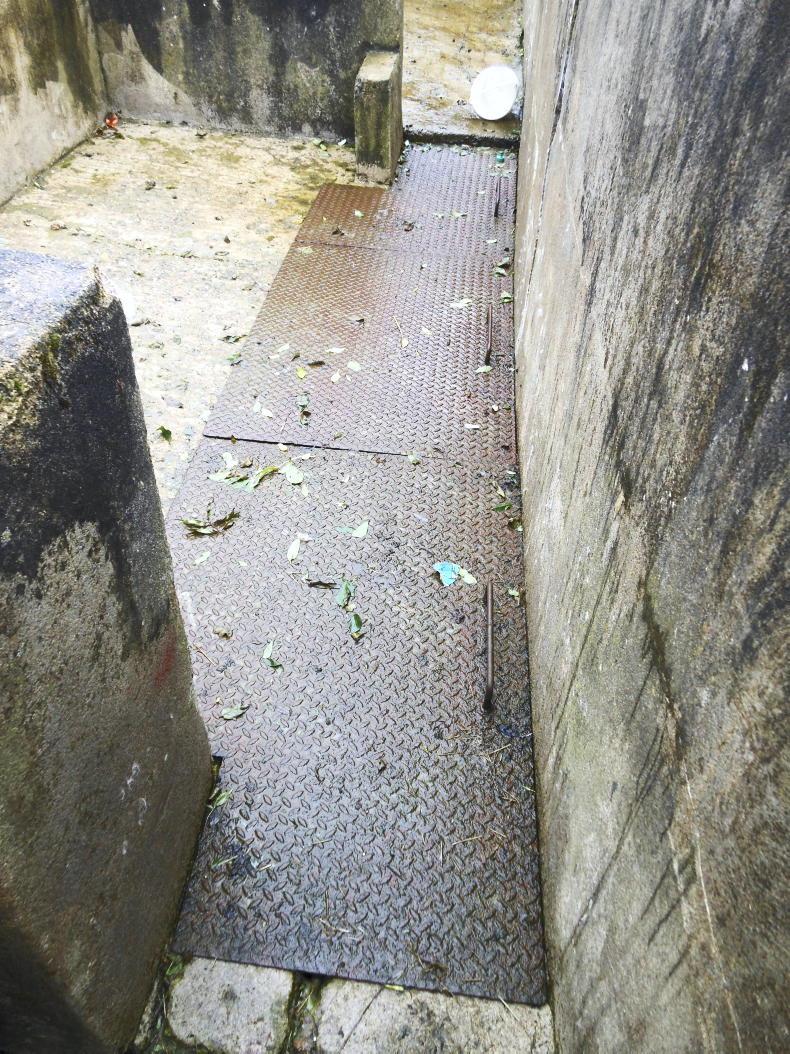
It is a requirement for tanks to be covered when not in use.
Each unit must also have a draining pen that allows excess dip to flow back to the tank. This must also be in good condition with the base free from any cracks and capable of collecting all dip draining from the fleece of sheep.
Sheep scab threat
intensifying
In his presentation, Paul Crawford said sheep scab had not gone away and is as much an industry challenge today as it ever was. The seriousness of the situation is not always recognised by the industry however, partly due to the fact that sheep scab is a notifiable disease but no cases have been officially recorded for quite some time.
Paul highlighted other industry concerns which have come to light in recent years including resistance developing to moxidectin, which along with ivermectin and doramectin make up the macrocyclic lactone anthelmintic class.
Their selection is encouraged by their ease of use
This is a very serious situation and most likely stems from excessive use of products when they are not required. For example, moxidectin-based products are frequently used to treat sheep for worms when there is no need for sheep scab treatment.
Their selection is encouraged by their ease of use but using when they are not necessarily required is one of the main factors that increases the risk of resistance developing. This is an even bigger industry challenge in terms of anthelmintic resistance.
Injectable products
Paul says that some of these injectable products often convey a false sense of problems being resolved. For example, he says one treatment with ivermectin may stop sheep scratching temporarily and give the impression the issue has been treated. However, in the absence of a second treatment to account for hatched eggs (which were not killed at the first treatment) issues will start to quickly re-emerge.
[...] mites can survive in the environment for up to 17 days and re-infect sheep
Paul highlighted that treatment with injectable products also often needs a break to a clean environment where sheep scab mites are not present. This is because mites can survive in the environment for up to 17 days and re-infect sheep. This is increasingly difficult at this stage of the year and reinforces the importance of following manufacturers’ guidelines in terms of recommended timelines for administering repeat treatments. He also cautioned farmers to be mindful of previous treatment, with the footvax vaccine potentially curtailing the range of products that can be selected (cannot use with Cydectin 1%).
Back to basics
Given these concerns, Paul says farmers need to get back to the basics when it comes to addressing external parasites and try where at all possible to make plunge-dipping the number one treatment choice.
There are no products licensed for use in sheep shower units or jetters, with Paul explaining that the only way to ensure every part of the sheep is treated is by immersion in a dip bath for 60 seconds with sheep fully immersed at least once during this time frame.
The longer sheep remain dry after dipping the better the dip will join to the wool
The success of treatments is also directly influenced by the solution in the dipping tub being mixed at the correct concentration and topped up as per the manufacturer’s guidelines. Management of sheep is also important. For example, he says that for the best results the fleece of sheep should receive minimum amounts of rainfall post-dipping.
“The longer sheep remain dry after dipping the better the dip will join to the wool. A small mist may not cause too much harm but you certainly don’t want to undo all the hard work by letting sheep get soaked for three to four days. This will also increase the risk of dip getting into the environment, which is what we don’t want happening.”
Industry partnership
A new Northern Ireland Sheep Scab Control and Eradication Group has been set up to tackle sheep scab across the industry. It is made up of farmers, vets, CAFRE, DAERA, farm organisations, pharmacology industry, merchants and wool board members.
Paul says the main focus of the partnership is to look into developing guidelines for controlling sheep scab, with the longer-term objective of establishing an eradication programme.
Medium-term objectives will also include identifying training needs for plunge dipping along with setting up a support programme to optimise and establish a robust network of mobile plunge-dipping operators.
A Northern Ireland Sheep programme webinar in December 2020 included a presentation by veterinary practitioner Paul Crawford on sheep scab and also provided information on the rules and regulations sheep producers and those offering a sheep dipping service must abide by.
There are two facets to these rules, the first of which entails receiving authorisation to purchase sheep dips while the second concerns authorisation to dispose of spent sheep dip.
Purchasing sheep dips
Starting with the purchase of sheep dips, sheep producers in Northern Ireland or contractors supplying dip must possess a Certificate of Competence in the Safe Use of Sheep Dips. Legislation introduced in autumn 2017 requires that at least one member of those involved in the dipping process holds a certificate.

The course is typically delivered in one day and involves an explanation of the regulations along with a discussion on a number of topics, including:
Knowledge of the parasites to be controlled.Preparing sheep for dipping and optimum handling procedures.An overview of products that can be used and their properties. Aspects to consider in designing an efficient sheep-dipping unit. There will also be a session looking at personal protective equipment and clothing while short assessments will ensure the course has been understood.
The course is delivered by CAFRE through its student programmes while courses for farmers outside of core educational programmes also take place periodically. It is also delivered by a number of other organisations offering short-term courses.
Sheep dip disposal authorisation
Farmers who dip sheep and spread spent dip on their land will also have to receive authorisation from the Northern Ireland Environment Agency (NIEA). A similar requirement is in place for waste pesticides, including tank washings which are not spread back over the crop.
Receiving authorisation is an important component of cross-compliance and is subject to inspection by NIEA. In the case of an inspection, NIEA will check if authorisation has been applied for and granted along with carrying out an assessment querying if terms and conditions of the authorisation have been met.
This includes assessing records pertaining to the disposal of dip and also an assessment on the condition of the dipping unit. This will be discussed in more detail below.

Authorisation application
The application to dispose of waste agro chemicals to land is a comprehensive document but one that is relatively straightforward to complete. There are questions relating to the presence of drinking water supplies or other spring borehole water supplies within 500m of the proposed disposal area.
There is also a question regarding soil type, with light sandy soils said to pose a greater risk of leaching of chemicals. Questions also refer to the depth of soil being greater than 0.6m (2ft) and if there is a land drainage system in the land concerned and a good cover of vegetation present.
Location maps
A critical component of the application is submitting farm maps with a scale of 1:10,000 clearly showing the proposed disposal sites marked with a red outline. A Basic Payment Scheme map will work perfectly for this objective and should also include the DAERA farm business number for the farm and lands concerned. Highlighting the field numbers which you intend to spread on will allow areas to be quickly calculated.
Maps will be cross-referenced with groundwater vulnerability scores and other aspects
The environment agency advises farmers to propose more fields than might be desirable to spread spent dip on so that if these fields which are preferred for applying spent dip are deemed unsuitable then there will be other options available without having to make a repeat application.
Maps will be cross-referenced with groundwater vulnerability scores and other aspects such as lands being classified as high-nature-value farmland and possessing restrictions on the type of practices that can be carried out.
It is important to note at this stage that contractors carrying out dipping can also seek authorisation to apply spent agrochemicals on their own lands or land within their control.
If successful this opens up the opportunity for contractors to offer a service whereby they will take the spent dip with them after the task has finished. This may be a requirement for some farmers in lands with a high groundwater vulnerability status.
Disposal details
The application form also requires information about the type of dipping that takes place on the farm (fixed plunge dipper, mobile dipping etc) and if it is a new or existing practice. If it is a fixed unit then this must also be clearly marked on the map outlining proposed spreading areas.
A guideline must be included on how many types of dipping is likely to take place throughout the year and the estimated volume of dip to be land-spread in any one year.
It is also important to note at this point that rules governing slurry spreading including prohibited application dates, buffer zones etc also apply to sheep dip disposal
This includes a description of the type of product used including bloom dips used to prepare sheep for showing and sale. The application also asks if dip is diluted or mixed with slurry before spreading and the method of application. It is also important to note at this point that rules governing slurry spreading including prohibited application dates, buffer zones, etc, also apply to sheep dip disposal.
The final section of the application asks a similar series of questions regarding pesticide usage and must also be completed where applicable.
Application procedure
Further information and a copy of the application can be found at www.daera-ni.gov.uk/articles/groundwater-authorisations. The NIEA advises that the target timeline for applications is typically up to four months to approve from time of receiving through to approval while certain high-risk applications may take longer. Therefore, it advises farmers or contractors to submit applications in advance of when dipping will occur.
It explains that authorisation does not lapse and wishes to remind younger farmers who may have recently taken over the running of a farm that the farm may already have received authorisation and that this authorisation remains with the farm.
One caveat to this is where the land designation status of the lands changes significantly and introduces restrictions on practices that can take place. Farmers with queries can contact the groundwater authorisations team on 028-926 33445.
Sheep dipper condition
Another important aspect to remember from a cross-compliance and groundwater authorisation perspective is the condition in which the dipping unit is maintained. The tank itself must be leak-proof, with any drainage plugs initially present now permanently sealed. Dip tubs must also be covered with a solid cover when not in use.

It is a requirement for tanks to be covered when not in use.
Each unit must also have a draining pen that allows excess dip to flow back to the tank. This must also be in good condition with the base free from any cracks and capable of collecting all dip draining from the fleece of sheep.
Sheep scab threat
intensifying
In his presentation, Paul Crawford said sheep scab had not gone away and is as much an industry challenge today as it ever was. The seriousness of the situation is not always recognised by the industry however, partly due to the fact that sheep scab is a notifiable disease but no cases have been officially recorded for quite some time.
Paul highlighted other industry concerns which have come to light in recent years including resistance developing to moxidectin, which along with ivermectin and doramectin make up the macrocyclic lactone anthelmintic class.
Their selection is encouraged by their ease of use
This is a very serious situation and most likely stems from excessive use of products when they are not required. For example, moxidectin-based products are frequently used to treat sheep for worms when there is no need for sheep scab treatment.
Their selection is encouraged by their ease of use but using when they are not necessarily required is one of the main factors that increases the risk of resistance developing. This is an even bigger industry challenge in terms of anthelmintic resistance.
Injectable products
Paul says that some of these injectable products often convey a false sense of problems being resolved. For example, he says one treatment with ivermectin may stop sheep scratching temporarily and give the impression the issue has been treated. However, in the absence of a second treatment to account for hatched eggs (which were not killed at the first treatment) issues will start to quickly re-emerge.
[...] mites can survive in the environment for up to 17 days and re-infect sheep
Paul highlighted that treatment with injectable products also often needs a break to a clean environment where sheep scab mites are not present. This is because mites can survive in the environment for up to 17 days and re-infect sheep. This is increasingly difficult at this stage of the year and reinforces the importance of following manufacturers’ guidelines in terms of recommended timelines for administering repeat treatments. He also cautioned farmers to be mindful of previous treatment, with the footvax vaccine potentially curtailing the range of products that can be selected (cannot use with Cydectin 1%).
Back to basics
Given these concerns, Paul says farmers need to get back to the basics when it comes to addressing external parasites and try where at all possible to make plunge-dipping the number one treatment choice.
There are no products licensed for use in sheep shower units or jetters, with Paul explaining that the only way to ensure every part of the sheep is treated is by immersion in a dip bath for 60 seconds with sheep fully immersed at least once during this time frame.
The longer sheep remain dry after dipping the better the dip will join to the wool
The success of treatments is also directly influenced by the solution in the dipping tub being mixed at the correct concentration and topped up as per the manufacturer’s guidelines. Management of sheep is also important. For example, he says that for the best results the fleece of sheep should receive minimum amounts of rainfall post-dipping.
“The longer sheep remain dry after dipping the better the dip will join to the wool. A small mist may not cause too much harm but you certainly don’t want to undo all the hard work by letting sheep get soaked for three to four days. This will also increase the risk of dip getting into the environment, which is what we don’t want happening.”
Industry partnership
A new Northern Ireland Sheep Scab Control and Eradication Group has been set up to tackle sheep scab across the industry. It is made up of farmers, vets, CAFRE, DAERA, farm organisations, pharmacology industry, merchants and wool board members.
Paul says the main focus of the partnership is to look into developing guidelines for controlling sheep scab, with the longer-term objective of establishing an eradication programme.
Medium-term objectives will also include identifying training needs for plunge dipping along with setting up a support programme to optimise and establish a robust network of mobile plunge-dipping operators.






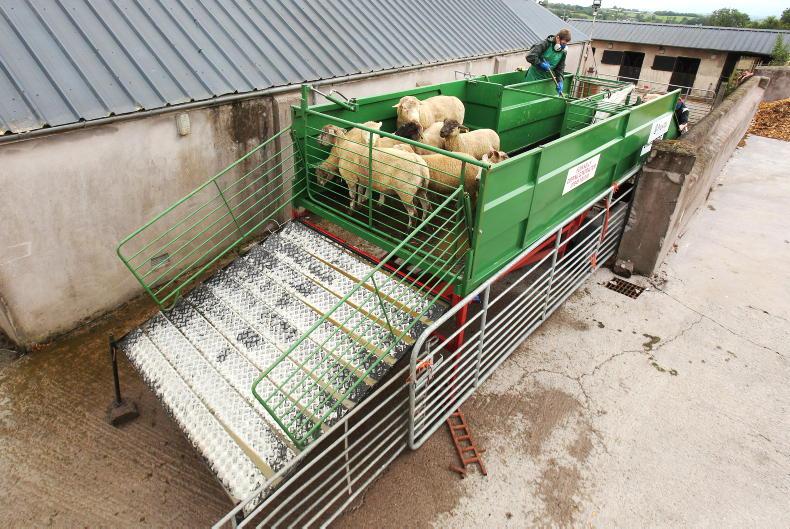

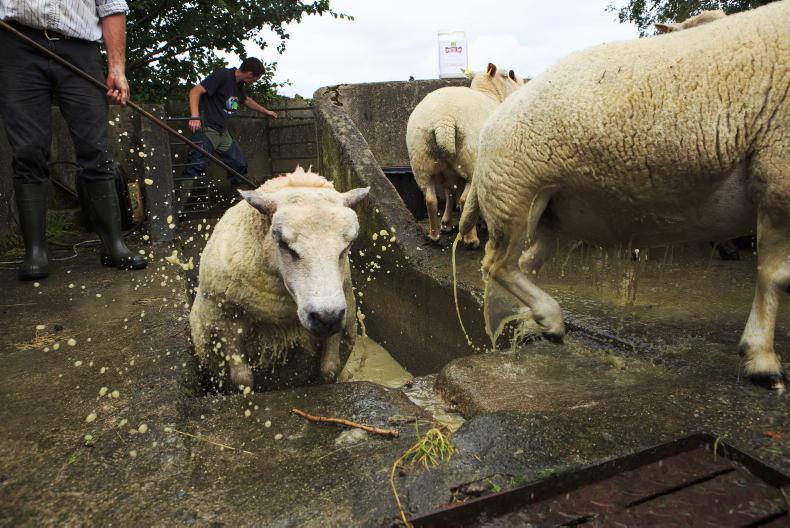
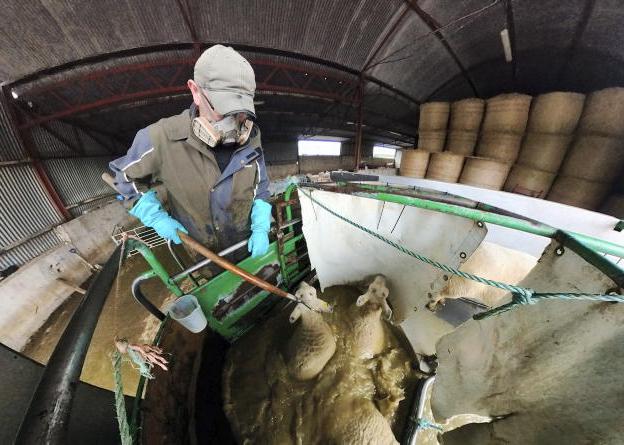
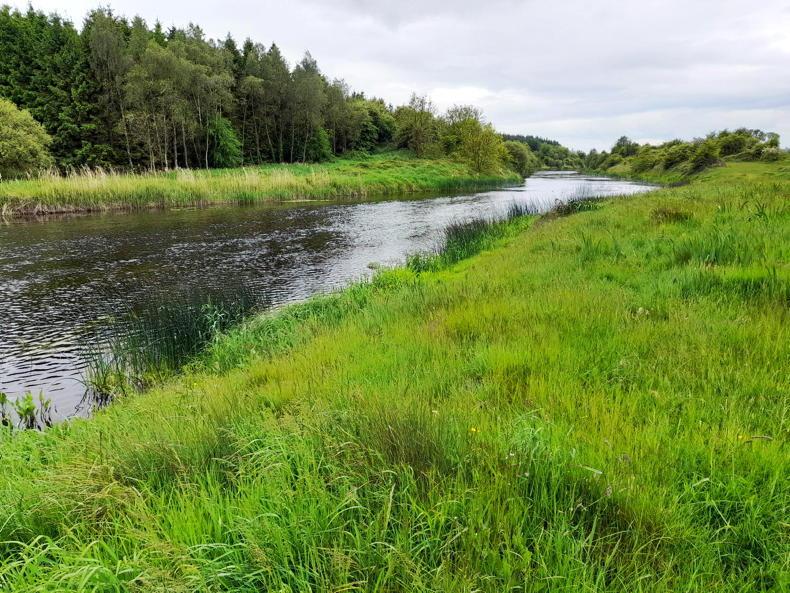
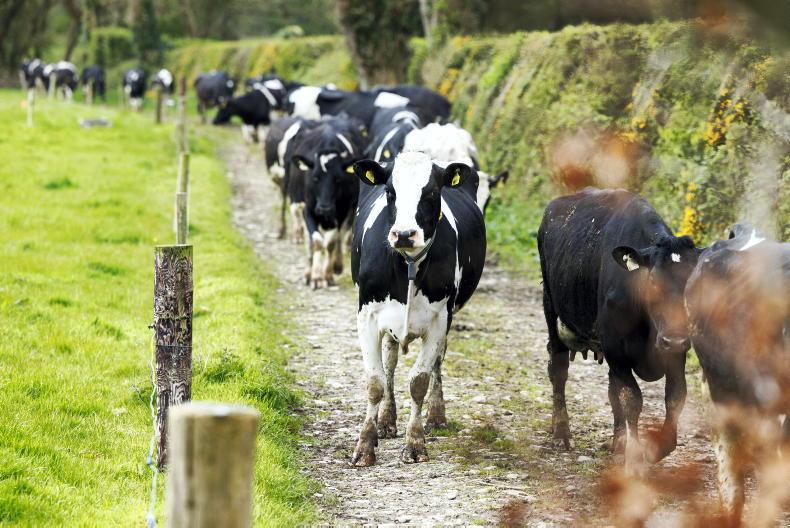
SHARING OPTIONS